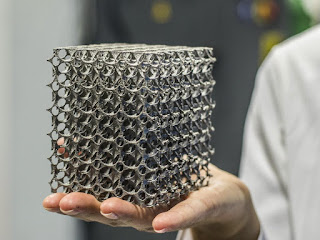New
developments in cryogenic freezing are transforming the frozen food industry by
making it easier to freeze all sorts of items quickly while retaining the
highest nutritional value. Cryogenic and tunnel freezers are easy to use, yet
they pose a hidden health risk. Learn why you may need an O2 monitor if your
frozen food manufacturing facility relies on cryogenic freezers.
How Cryogenic Freezers Work
Cryogenic
freezers allow for continuous freezing of food, increasing output without
requiring a large amount of space. Compared to mechanical freezers, which take
longer to freeze products, they increase both the production and the quality
with a low investment of capital.
In
particular, cryogenic freezers are useful for freezing par-baked goods, which
are partially baked before being frozen for storage. Par-baked items allow
fast-food restaurants, supermarkets, sandwich shops, cafes, and other
institutions to offer fresh, healthy baked goods without needing to bake
from-scratch every day. For a commercial baking facility, investing in a
cryogenic freezer is the best way to increase their output, grow their
business, and become more profitable.
Cryogenic
freezers work by using liquid nitrogen to quickly chill items to safe
temperatures for frozen storage. As in any environment where liquid nitrogen is
present, there is a danger of oxygen depletion and asphyxiation. Thus, it is
always a good idea to have an O2 deficiency monitor present onsite to protect
the health of employees.
One subset
of cryogenic freezers, the tunnel freezer, uses a continuous freezing model of
a conveyor belt, an injection system, and an exhaust system to vent gases. When
the texture of the finished product is paramount, as in baked goods or
seafoods, or when it's necessary to flash freeze hot foods quickly, a tunnel
freezer is the best way to maintain quality in the end product.
Why an Oxygen Detector is Necessary with
Cryogenic Freezers
As mentioned
above, cryogenic tunnel freezers rely on an inert gas, nitrogen, to flash
freeze food items. Nitrogen is perfectly safe when used in the closed-loop
freezer system and properly vented from the facility. However, if the exhaust
system were to develop a leak, nitrogen gas could enter the manufacturing
facility and start to displace oxygen from the air. Since nitrogen is colorless
and odorless, staff would not notice the leak. In a matter of minutes, ambient
levels of oxygen could drop so severely that staff could become disoriented,
lose consciousness, or die.
Simply by
installing O2 monitors wherever nitrogen gas is used or stored, you can monitor
levels of oxygen in the air and ensure there is no risk of oxygen displacement
from a nitrogen leak. In the event that nitrogen leaks into the environment,
the O2 deficiency monitor will sound an alarm and flash lights to let staff
know that oxygen levels have fallen below the acceptable threshold set by OSHA.
Staff can then evacuate before their health is compromised.
There are
many styles of O2 monitors, but the one we recommend for flash freezing
environments is the Sample Draw oxygen monitor. The style of O2 monitor can be
placed outside the freezer and monitor levels of oxygen inside the freezer
using a polyurethane tube. This ensures the sterility of the flash freezing
environment while safeguarding workers. With a state-of-the-art zirconium oxide
sensor, this style of oxygen detector can last without any maintenance for up
to 10 years.
PureAire has
over 15 years of experience, and is an industry leader in oxygen detector
technology. To learn more about the Sample Draw oxygen monitor, please visit
www.PureAireMonitoring.com.













